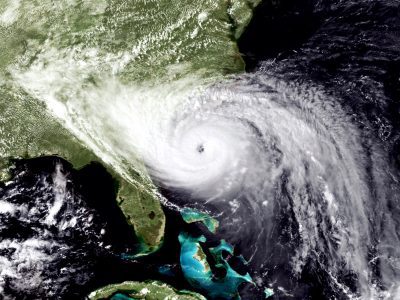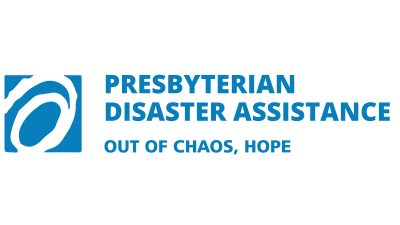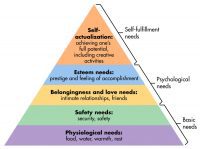By Forrest Palmer, Presbyterian Disaster Assistance National Response Team
“The light shines in the darkness, and the darkness did not overcome it.” John 1: 5
 It happened at night. Hurricane Hugo, a Category 5 hurricane, slammed the coast of South Carolina and curved toward us in Charlotte, where my wife and I were serving Sardis Presbyterian Church. As the core of the hurricane approached us, our family huddled in a hallway outside a bathroom on the first floor, away from windows, as we listened to the howling winds outside.
It happened at night. Hurricane Hugo, a Category 5 hurricane, slammed the coast of South Carolina and curved toward us in Charlotte, where my wife and I were serving Sardis Presbyterian Church. As the core of the hurricane approached us, our family huddled in a hallway outside a bathroom on the first floor, away from windows, as we listened to the howling winds outside.
The power went out quickly. The darkness of the night was interrupted by flashes of light outside, which were either lightening or exploding transformers. And then we heard the noise of a train. I started to say, “What would a train be doing out there in the midst of a hurricane?” but then I knew it was not a train – it was a tornado. Suddenly, the house shook, as trees hit the roof. A long branch burst through our kitchen window, exploding glass across the house.
When daylight finally came, the backyard was a debris field – utter destruction. In the days ahead, we were disconnected from telephone, power and cable for what seemed like an eternity. The work ahead of us seemed daunting – so much to clean up. But in the aftermath, neighbors helped neighbors.
The church we served had such an inspirational worship service the first Sunday after the hurricane. It was a service without power; the sanctuary lit only by candlelight…out of chaos, hope – which is the theme for Presbyterian Disaster Assistance.
 I am one of about 100 volunteers for the Presbyterian Disaster Assistance (PDA) ministry. Approaching retirement, I felt a calling to receive more training and offer myself as one who helps others following a disaster. PDA stands ready to go help churches, communities, families and individuals deal with the aftermath effects of a disaster, whether it be a natural disaster or human-caused disaster. This includes refugees, who are fleeing threats and violence, seeking safety for their children and family.
I am one of about 100 volunteers for the Presbyterian Disaster Assistance (PDA) ministry. Approaching retirement, I felt a calling to receive more training and offer myself as one who helps others following a disaster. PDA stands ready to go help churches, communities, families and individuals deal with the aftermath effects of a disaster, whether it be a natural disaster or human-caused disaster. This includes refugees, who are fleeing threats and violence, seeking safety for their children and family.
In our various PDA trainings, we visualize in our minds the individuals and communities who are impacted by disasters, their needs and how we might help people move toward hope and recovery. Then, when we are deployed, we put those trainings into practice, supported by the prayers of our team members and the Church.
Gratefully, there are many disaster response organizations ready to be of help, both with immediate response and long-term recovery. Within West Virginia, we can recall disasters that have struck us. We can recall those who came to help in our time of need, whether they were from within the state or traveled here to help us. We are called to bring light into the darkness and hope out of chaos.
On the Presbyterian Mission Agency’s page on disaster response, it says, “When natural or human-caused disasters impact communities, Presbyterian Disaster Assistance (PDA) is poised to respond and work closely with congregations and local mission partners to bring Christ’s love and healing. PDA is the emergency and refugee program of the Presbyterian Church (U.S.A.). The core budget, including staff and administrative costs, is funded through the One Great Hour of Sharing, and its program work is additionally funded through designated gifts.”
Through the years, a variety of resources have been developed to assist congregations and individuals, including worship resources, volunteer opportunities, and amazing video resources. These can be found at pda.pcusa.org/pda/resources.
So how are you called to bring light into the darkness? What can your church do to help those impacted by disasters? How can you prepare your church and your home for a potential disaster?
 Perhaps you are familiar with Maslow’s hierarchy of needs. Disasters knock us down to basic needs – food, water, shelter, and safety.
Perhaps you are familiar with Maslow’s hierarchy of needs. Disasters knock us down to basic needs – food, water, shelter, and safety.
Even years after a disaster, we relive the stories of how the disaster impacted us. We need to build resilience and skills to help us cope with those disasters. So how can we help? How can you help?
